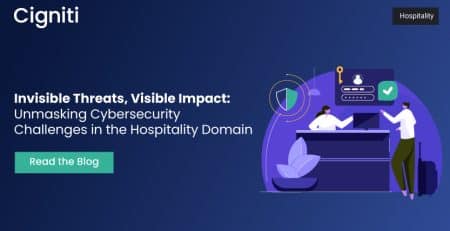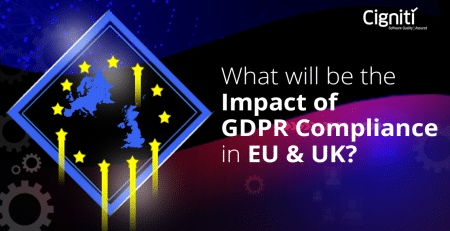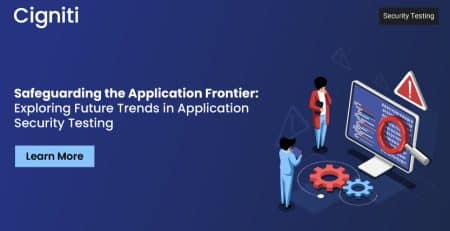Cybersecurity in the Digital Era – A Business Imperative
Digitalization has transformed the way we view and experience the world. Enterprises are eying the development of digital-first business models to attain competitive advantage and fundamentally transmute how to deliver value to customers.
While the digital footprint is being expanded on a war footing, leaving little time for planning, the security risk has also increased exponentially.
Moreover, the pandemic has become a fertile ground for scammers and cybercriminals to proliferate cyber risks as enterprises continue to automate their operations and digitalize their businesses.
According to Gartner, “As the world emerges from the pandemic pause, the needs and expectations of the business changes, too. After the crisis, new business objectives across the enterprise will require IT to adapt to new technology roles and develop new skills.”
The rapid adoption of emerging technologies such as Artificial Intelligence (AI), Machine Learning (ML), Internet of Things (IoT), automated botnets, and cloud computing is greatly compounding the growth towards digitalization.
However, it is adding dynamic cybersecurity challenges for enterprises. They should ask themselves whether we have considered risks to emerging platforms and solutions such as software bots and smart devices.
Cyber risks arising out of emerging technologies and solutions
Managing cyber threats within enterprises is already a significant leadership challenge.
Sequestered and innate cyber risks are inherent in emerging technology platforms and solutions.
According to Paul Chapman, CIO of Box, “One common misconception is that going digital is about implementing a set of technologies that get you to a digital outcome. And that isn’t the case. Granted, technology is an enabler to a set of outcomes, but unless you think through how you rewrite your company versus your software, you’ll miss the desired end state.”
Emerging technologies amalgamated with new types of malware, such as crypto mining software and automated phishing tools, are bolstering the cyber risk landscape.
Enterprises must unceasingly revisit their cybersecurity measures to defend against the onslaught.
Business leaders continually use strategies to protect their enterprises from cyberattacks while extracting value from technology hoards.
What should business leaders do to protect enterprises from cyberattacks
While watching their vivacious digital assets take the utmost precedence, Chief Information Security Officers (CISOs) and other business leaders have had to think through how to assess threats related to emerging technologies and platforms.
Gartner states, “Digital business transformation and emerging cyber-physical systems create unprecedented security risk. In response, many organizations have adopted new cybersecurity approaches. By 2023, 75% of organizations will restructure risk and security governance to address new cyber-physical systems (CPS) and converged IT, OT, Internet of Things (IoT), and physical security needs, an increase from fewer than 15% today.”
A few pointers gleaned from the most credible research reports for business leaders to protect their enterprises from cyberattacks are as follows –
- Understand key business priorities, identify goals, set objectives, and build a business case.
- Define security controls in line with business strategies and map them to a regulated security framework.
- Implement Privacy-Enhancing Computation (PEC) methods to safeguard data being used to empower secure data processing even in leery environments.
- Develop an action plan to create a risk prioritization framework and conduct vulnerability and penetration testing.
- Build dedicated cyber-savvy committees led by a CISO that pay attention to all the cybersecurity needs within the enterprise.
- Develop critical incident response capability and an action plan in case of breach and maintain accountability and assurance through governance.
While meeting rapidly evolving customer expectations is imperative, enterprises must know how to steer commotion to prevailing cybersecurity models as they espouse agile development and cloud computing.
The role of cybersecurity in agile development and cloud computing
As security specialists are fundamentally malleable to the varying ecology of cyber threats, it is practically viable that they would flourish in a place that works towards flexibility, a core belief behind Agile.
Agile development and cloud computing have become the norm for every enterprise embarking on their digital journey.
To achieve security and quality at speed, agile development driven with cloud computing is the most preferred combination for many enterprises.
According to Bob Bruns, CISO, Avanade, and Forbes Technology Council Member, “The good news is that cybersecurity continues to advance yearly. Companies moving to agile development strategies shouldn’t fear compromising their security. Instead, they should be sure to take advantage of the security and cost savings offered by the cloud, correctly categorize their data, consider security at every stage of the design, conduct practice attacks, and test the security incident mitigation process.”
It is imperative to take advantage of the cloud that offers high levels of security. Enterprises can attain superior assurance in the face of the digital world, with cybersecurity entrenched in most businesses.
Post-pandemic, many enterprises have transitioned to the cloud, allowing their employees to work remotely, and enterprises have eventually become weary of the security risks of remote cloud access.
It is a business prerogative to implement the best security practices and enable IT compliance with cybersecurity.
Enabling IT compliance with cybersecurity
Most of the battle is won from the security standpoint by enabling IT compliance with cybersecurity.
As cybersecurity regulations are industry-specific, it is essential to understand that there is no quotidian approach to compliance management.
According to a research study by Deloitte, “Establishing an effective cybersecurity program is a major challenge for companies regardless of industry and geography. However, the challenge is much greater for international businesses since they must comply with regulations from multiple jurisdictions and regulators. Although many companies already have programs to address cybersecurity risks, once formal regulations are established in different jurisdictions, companies should figure out how to achieve an efficient and effective control framework for global compliance.”
Enterprises must create a thorough risk assessment plan and set security controls such as network firewalls, data encryption, incident response plans, patch management schedules, and network access control to help manage those risks.
They also must update all the cybersecurity policies and procedures continuously.
To streamline business processes and develop a digital-business-ready environment, enterprises must create a framework that adheres to IT compliance, minimizing cybersecurity risk.
Enterprises can build a solid digital business foundation by taking a holistic approach to governance and risk management procedures, thus optimizing business processes and saving time & energy for business leaders.
Closing thoughts
While implementing cybersecurity in the digital era is imperative, with the right approach and subject matter knowledge, one can expect vast benefits that empower enterprises to stay ahead of the race.
Cigniti’s unique Application Security Testing Services help you weed out risks from your application and ensure that your applications meet regulatory and compliance requirements. Leading businesses in North America rely on our penetration testing services to make their applications threat-proof. We have worked with leading large and small companies and helped them build safe and secure software for their users.
Cigniti’s team validates whether your cloud deployment is secure and gives you actionable remediation information when it’s not complying with the standards. The group conducts proactive, real-world security tests using the same techniques employed by attackers seeking to breach your cloud-based systems and applications.
Need help? Consult Cigniti’s team of experienced security testing experts to understand how they can help tackle and prevent any malicious cyberattack against your organization.
Schedule a discussion today.





Leave a Reply